Exploring the Westin Maui Resort & Spa at Ka’anapali Beach
The resort's reimagined Hokupa'a tower is an idyllic and luxurious celebration of Maui itself
Photos courtesy of Westin Maui Travel Features Hawaii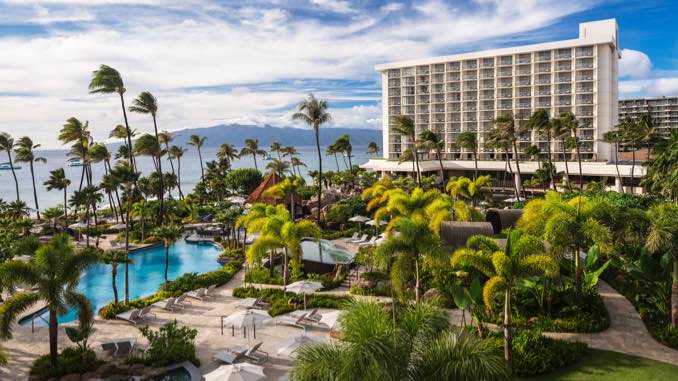
Perhaps this is an odd admission coming from a Floridian, but growing up, I always viewed Hawaii as the platonic ideal of vacation destinations—the ultimate treasure at the end of the “Are we there yet?” rainbow, if you like. I never made the trip across the continent and half of Earth’s largest ocean to the tropical Paradise of the Pacific, settling instead for the nearby barrier island beaches of my home state. But that changed late last year, when the Westin Maui Resort & Spa hosted its “Discover a New Star on Maui” press event to highlight the $120 million transformation of the hotel’s Hokupa‘a (Hawaiian for the North Star) luxury tower (formerly known only as the Beach Tower)—a chance for me to finally follow that rainbow and see if reality measured up to what I had imagined. (Spoiler alert: Yes, for sure.)
It helped to have such a specific destination, particularly for a first-time trip to Hawaii. The choice between the state’s eight major islands and hundreds of minor ones would have been paralyzing otherwise, although “anywhere but here” is a perfectly viable option in the pandemic-era vacation playbook. Instead, we met Maui, second only to “The Big Island” in size, and shaped like a woman’s torso, our driver explained—it was only a 45-minute trip from the Kahului Airport at the base of her neck to the Westin Maui on Ka’anapali Beach, smack-dab in the middle of her forehead. The drive in took us past citrus fields and the distant, near-extinct volcano Haleakala, with monkeypod trees enclosing some stretches of the two-lane road, and the deep blue Pacific (and standing rain water dumped on beaches by the past days’ storms) mere feet from others.
The first item on our trip’s agenda set the tone for the entire stay: a relaxed, yet convivial reception in the Hokupa’a tower’s ocean-overlooking Lanai, a private second-floor bar and lounge accessible only by guests staying in the tower itself. The space is a central hub offering a variety of light bites, craft cocktails (and extremely knowledgeable bartenders), live music and Hawaiian cultural classes—we would return to it repeatedly during our time at the resort, greeted each time by an ever-friendly and diligent staff on our way to eating and drinking in luxury while seated in its infinity edge pool. Its sleek, spacious confines, opening on panoramic views, felt inextricably connected to Ka’anapali Beach itself and beyond, like we could reach out and pluck The Lanai’s namesake island from the horizon.
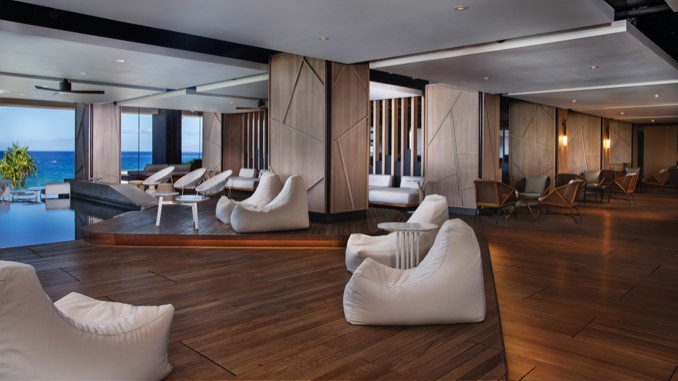
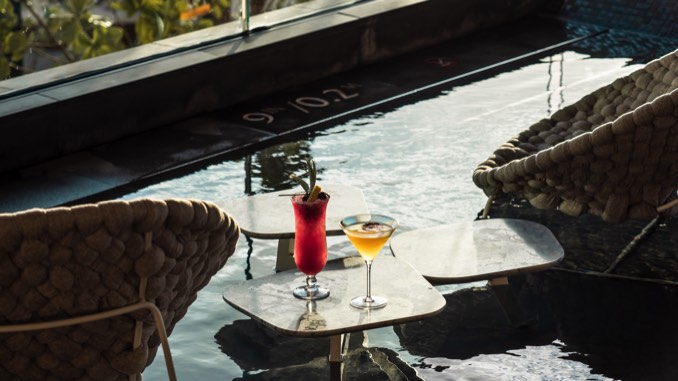
This was the intended effect of not only the Hokupa‘a tower’s new design, but of the entire trip, as the hotel’s manager of Hawaiian programming Oralani Koa and local artist Philip Sabado explained. The latter speaker emphasized “pilina,” a connection to one’s environment—those transcendent moments of natural beauty that are only for you. Those moments were never far away: At the end of a near-24-hour trip and first day on the island, after all but collapsing into bed, the sounds of birds chirping and waves crashing on the beach just outside lulled me to a sound and peaceful sleep—and they were there to greet me when my internal clock, very much on East Coast time, woke me up at 4 a.m. A few nights later, during dinner and drinks under the stars at the Hale A (“House of Sparkle”) pool bar, we would marvel at the moon, Jupiter, Saturn and Venus, aligned in the night sky. I doubt we went one day without seeing (literal) rainbows, like the (figurative) one we’d followed to get there.
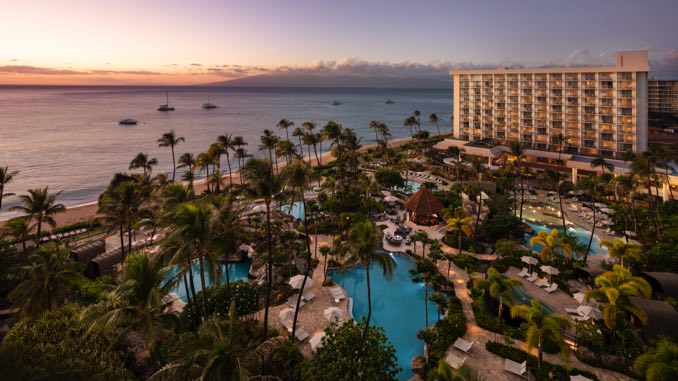
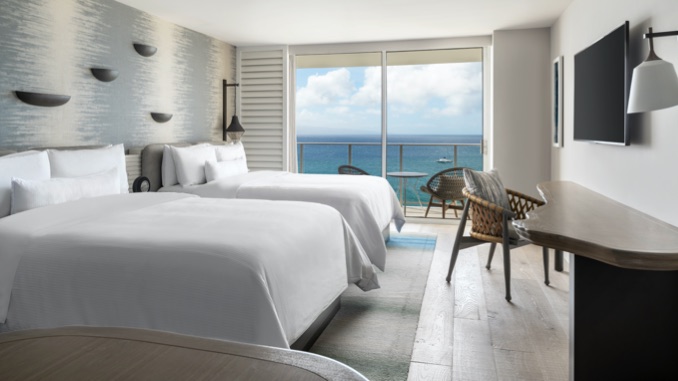
Though our Hokupa‘a tower room was beachy, pristine and well-appointed, it felt borderline criminal to spend much time in it, simply because the rest of the property was so lush and inviting. (I joked that any guest caught removing their in-room TV’s remote from its plastic sanitary bag should be ejected from the premises, earning a chuckle from my wife, surely a show of gratitude for my having brought her there.) The tower overlooks not only Ka’anapali Beach, but also the resort’s sprawling network of swimming pools—we counted six, including the smaller, sandy-bottomed plunge pool that was our favorite, and made a point to at least dip a toe in every one of them. Looking down from our private balcony, it appeared as if the resort had merged with Maui itself, its palm tree-dotted, rocky constructions indistinguishable from the very landscape.
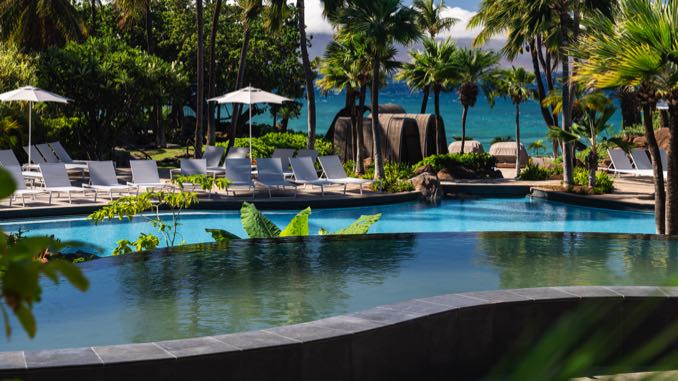
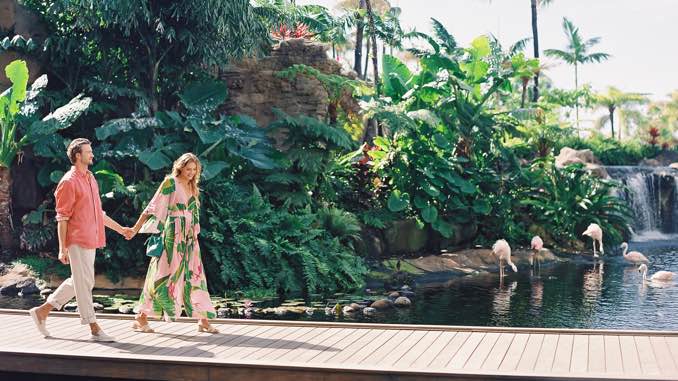
That connection to the island and its culture—that precious pilina—permeated our experience in the days to follow, from a beach cleanup led by world champion waterman Zane Kekoa Schweitzer, in which we sifted microplastics out of the Ka’anapali Beach sands and tried not to tip over on paddleboards, to a catamaran cruise, on which we learned about the native sea life and swam with sea turtles off the sunken Mala Wharf. During the beach cleanup, Schweitzer described the ocean not as separating Hawaii’s islands, but rather as connecting them, just as the Pacific connects Hawaii to so much of the world—as most clearly exemplified, unfortunately, by the myriad rubbish that washes up on its beaches. But it was a beautiful notion: that, though Hawaii is one of the most remote inhabited places on the planet, all that truly isolates it is one’s own perspective.
Meanwhile, aboard the Teralani 4 after a gourmet brunch at the resort’s upscale Waicoco restaurant, we observed a couple of whales, hundreds (!) of spinner dolphins, and a large, blue-bottomed boat washed up onshore south of the resort. When a passenger asked if the boat had been put there as an elaborate decoration, the captain informed us it had in fact run aground in the storms preceding our group’s arrival on the island. Sea level rise has increasingly pushed back Hawaii’s beaches, the captain noted, a reminder of just how much more precious such a place becomes with each passing day. It was also a reminder of another Hawaiian principle that Sabado taught me that first night: “kuleana,” the responsibility borne by citizens of (and visitors to) not only Hawaii, but also Earth. It’s only right that we give back to the natural world that gives so much to us.


Though we never wandered far from the Westin during our time on Maui, except to walk Ka’anapali Beach and snorkel at nearby Black Rock, it still felt as if we’d had the kind of truly Hawaiian experience to which not all visitors to the Aloha state are privy. The trip felt less like putting the resort through its paces and more like celebrating it—celebrating Maui. A pair of frequent guests with whom we shared a Hokupa‘a tower elevator spoke highly of the property’s two-year renovation, evidence (however anecdotal) of the resort’s effect on newcomers and regulars alike. It’s an utterly frictionless oasis in an ever-intensifying world, where the beauty that makes this (*gestures at everything*) all worth it is plain to see everywhere you look—a paradise worth following the rainbow for.
Scott Russell is Paste’s music editor and he’ll come up with something clever later. He’s on Twitter, if you’re into tweets: @pscottrussell.